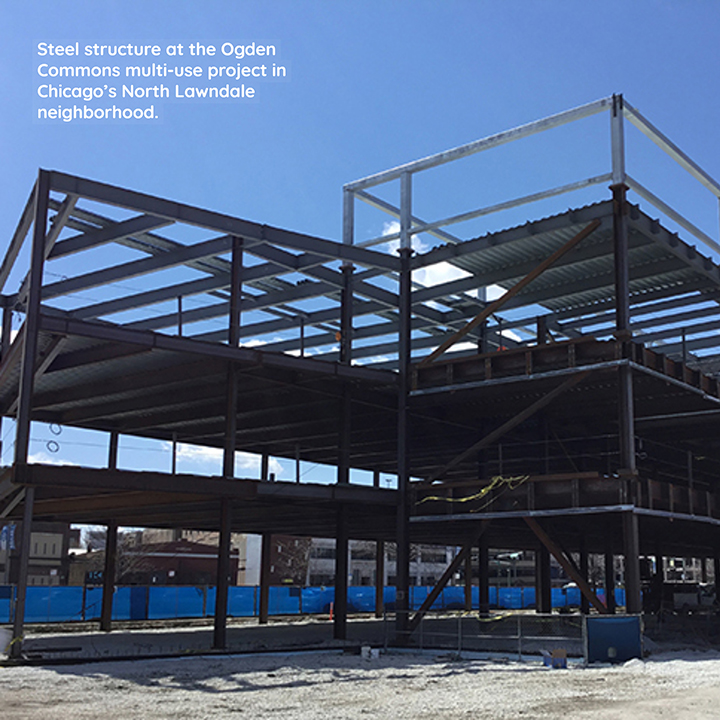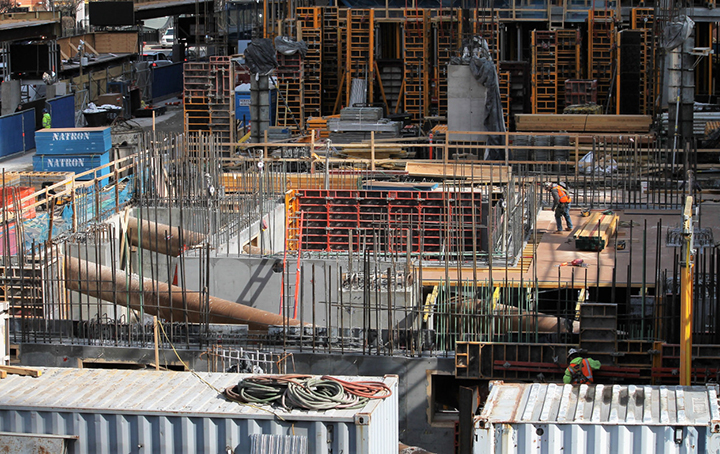Anticipating the Impacts of COVID-19 on Construction Costs
by Steve Wiley, Senior Vice President-Preconstruction
May 28, 2020
As the construction and real estate industries begin to eye the expected relaxation of COVID-19 restrictions leading into June 2020, a common question is being asked: What impact will the past few months have on construction prices immediately and in the near future?
Industry observers, such as ENR, FMI and the AGC, do not offer any definitive guidance at the time of this writing, which is consistent with what we have seen from most other financial scorekeepers.
So what do we know?
In the first quarter of 2020, we saw steel prices rise several points, however trades that rely heavily on steel material remained relatively flat to slightly up on overall pricing indicating that the subcontractor market had a healthy appetite to book new work at competitive prices. Along with this noticeable trend during the same period, we saw the numbers of subcontractor bidders increase on a project by project basis, further indicating a growing appetite to book new work at flat to aggressively lower costs.

Entering the second quarter with respect to the subcontractor market we saw an increase in the first quarter trends with bid participation by subcontractors at increasing levels and quoted costs trending downward. While it is still too soon to measure a percentage of cost reductions across the market or for how long reductions will last, we know only for certain at this point that pricing is ticking downward.
Early 2020 Compared to 2007-2008
The recession of 2007-08 saw investor confidence and therefore available capital at the bottom. Current conditions are quite different now with investors and capital still available but cautiously watching for sustained positive market indicators to flash in order to return to the market. The 2007-08 recession saw subcontracting costs in our primary Chicago union market in the first three quarters of 2009 drop 5%-10% depending on the trade. Industry information shows that there were larger drops in non-union markets as high as 15%.
Things To Watch
- Commodity and material costs are expected to move downward –The sharp reductions in oil prices this year should affect oil-dependent material prices beginning in the third quarter; with the reduction in demand for other commodities affecting construction material prices later in the year. The impact of these commodity price reductions on material prices will begin to be recognized later this year and likely into 2021.
- Construction Labor – The AGC has April 2020 construction employment down 16.6% from April of 2019 based upon data from the Bureau of Labor Statistics, with a drop of 13% in construction employment from March to April 2020. This amounts to 975,000 construction jobs and is more than 6 times greater than the previous record drop in construction employment recorded in March 2009. That being said, in the Chicago union market, labor rates are fixed and increases are pre-negotiated, so labor costs locally are not expected to decrease.
- Construction Volume – ENR reports for construction volume in March 2020 continued to show growth of 4.7% over March 2019, but we are expecting construction volume in April and May to show declines to reflect the reduction in construction employment. In 2007-08 the recession led to an 11.9% reduction in overall construction volume with an 18.1% reduction in privately funded construction in 2009.
- Contractor Appetite – We expect interest in real shovel-ready projects to result in a high number of interested bidders and aggressive pricing which will be the result of thinner margins and greater production assumptions. This may be countered slightly by costs included or clarified exclusions relative to project related COVID-19 mitigation and compliance costs.
- Subcontractor Stress – General contractors and owners will face added risk of marginal or under-capitalized subcontractor failures due to current market forces.
- Effects On Products From China – Again, it is too soon to tell how the supply chain from China will be affected as the world assesses the damages and fallout of the COVID-19 crisis. Political and trade impacts are almost certainly expected, and how this affects key construction related products and pricing again remains to be seen. Fore example, in the Chicago market, many projects are relying on Chinese exterior wall systems which thus far have price points that are not available from other sources. This single item, although certainly not the only one, has the ability to greatly affect the proforma of many projects if Chinese-sourced products are no longer available or cannot be purchased at the anticipated lower price points.
A seemingly positive aspect is that ongoing research into therapeutic treatments for COVID-19, if perfected, could instantly ignite a sputtering economy. A downside consequence is that if budgeting is completed mid-pandemic with aggressive pricing, those anticipated savings could evaporate as the market accelerates, thus leaving projects with lower budget commitments in a precarious position.


